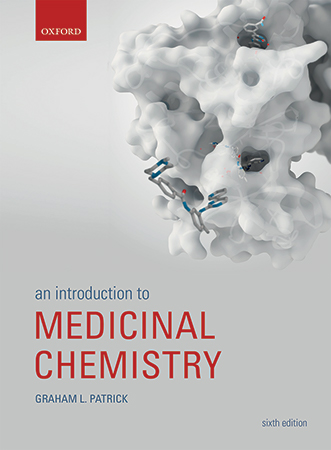An Introduction to Medicinal Chemistry

An Introduction to Medicinal Chemistry
|
ISBN: |
9780198749691 |
|
Binding: |
Paperback |
|
Published: |
29 May 2017 |
|
Availability: |
15
|
|
Series: |
$89.95 AUD
$102.99 NZD
Add To Cart Request an inspection copyDescription
For many people, taking some form of medication is part of everyday life, whether for mild or severe illness, acute or chronic disease, to target infection or to relieve pain. However for most it remains a mystery as to what happens once the drug has been taken into the body: how do the drugs actually work? Furthermore, by what processes are new drugs discovered and brought to market?
An Introduction to Medicinal Chemistry, sixth edition, provides an accessible and comprehensive account of this fascinating multidisciplinary field. Assuming little prior knowledge, the text is ideal for those studying the subject for the first time. In addition to covering the key principles of drug design and drug action, the text also discusses important current topics in medicinal chemistry. The subject is brought to life throughout by engaging case studies highlighting particular classes of drugs, and the stories behind their discovery and development.
This title is available as an eBook. Visit VitalSource for more information or to purchase.
Contents
1: Drugs and drug targets - an overview
Part A Drug targets - structure and function
2: Protein structure and function
3: Enzymes: structure and function
4: Receptors: structure and function
5: Receptors and signal transduction
6: Nucleic acids: structure and function
Part B Pharmacodynamics and pharmacokinetics
7: Enzymes as drug targets
8: Receptors as drug targets
9: Nucleic acids as drug targets
10: Miscellaneous drug targets
11: Pharmacokinetics and related topics
Case study 1: Statins
Part C Drug discovery, design, and development
12: Drug discovery: finding a lead
13: Drug design: optimizing target interactions
14: Drug design: optimizing access to the target
15: Getting the drug to market
Case study 2: The design of ACE inhibitors
Case study 3: Artemisinin and related antimalarial drugs
Case study 4: The design of oxamniquine
Part D Tools of the trade
16: Combinatorial synthesis
17: Computers in medicinal chemistry
18: Quantitative structure-activity relationships (QSAR)
Case study 5: De novo design of a thymidylate synthase inhibitor
Part E Selected topics in medicinal chemistry
19: Antibacterial agents
20: Antiviral agents
21: Anticancer agents
22: Cholinergics, anticholinergics, and anticholinesterases
23: Drugs acting on the adrenergic nervous system
24: Opioid analgesics
25: Antiulcer agents
26: Cardiovascular drugs
Case study 6: Steroidal anti-inflammatory agents
Case Study 7: Design of a novel antidepressant
Case Study 8: The design and development of aliskiren
Case Study 9: Factor Xa inhibitors
Case Study 10: Reversible inhibitors of HCV NS3-4A protease
Appendices
Authors
Graham Patrick - Lecturer in Organic Chemistry and Medicinal Chemistry, University of the West of Scotland.
Student Resources
- Multiple Choice Questions to support self-directed learning.
- Web articles describing recent developments in the field and further information on topics covered in the book.
- Journal Club to encourage students to critically analyse the research literature.
- Molecular Modelling Exercises, with new exercises in Chem3D.
- New assignments to help students develop data analysis and problem solving skills.
Lecturer Resources
- A test bank of additional multiple-choice questions, with links to relevant sections in the book.
- Answers to end-of-chapter questions.
- Figures from the book, ready to download.
- Power Point slides to accompany every chapter in the book.
Reviews
`It is by far the best book on the market for medicinal chemistry and drug discovery.' Professor Steven Bull, University of Bath
`Summarizes the chemistry of medicinal agents in a manner that easily facilitates understanding of the core principles in the context of pharmacological drug action and clinical therapeutics.' Professor John Marriott, University of Birmingham